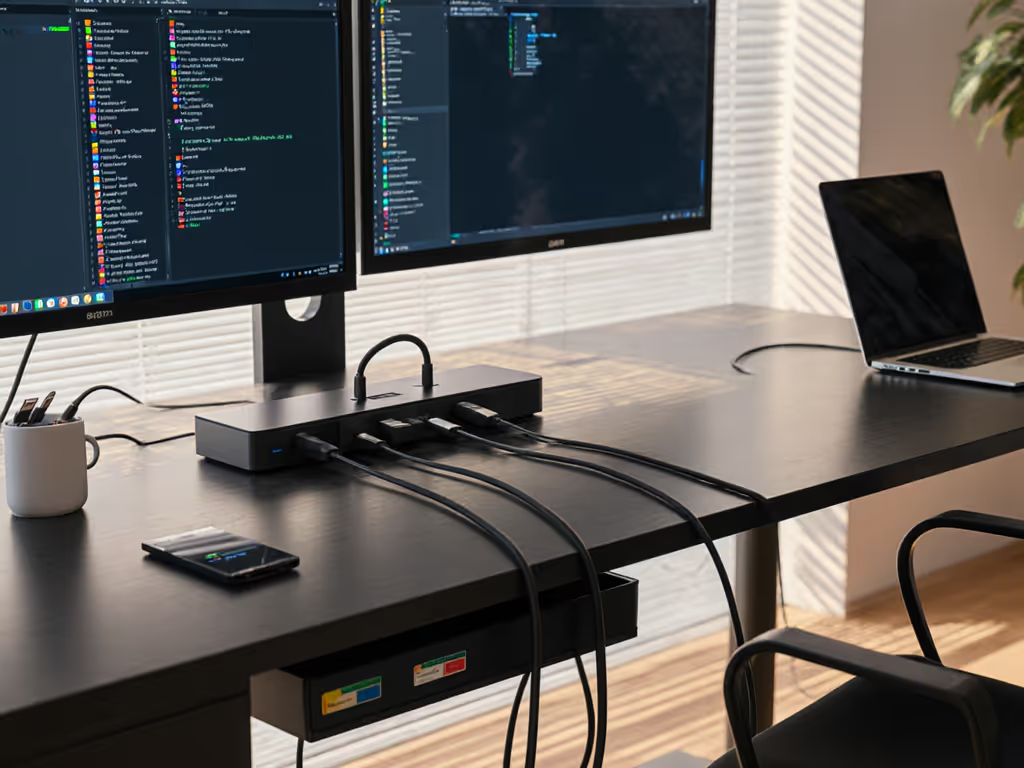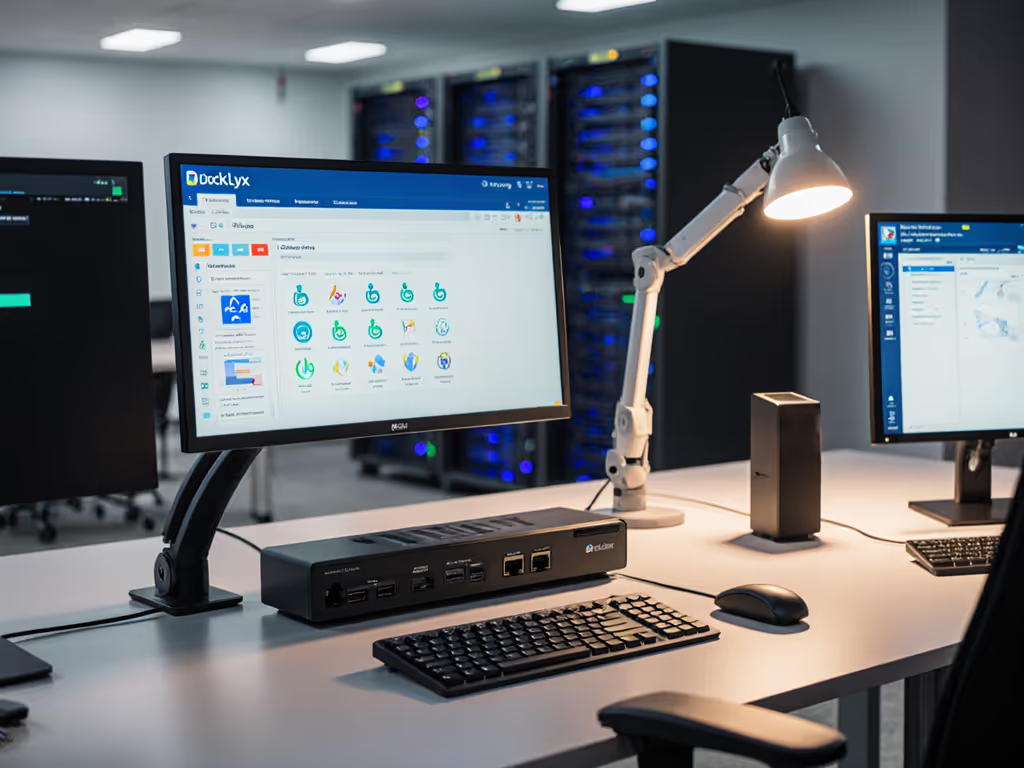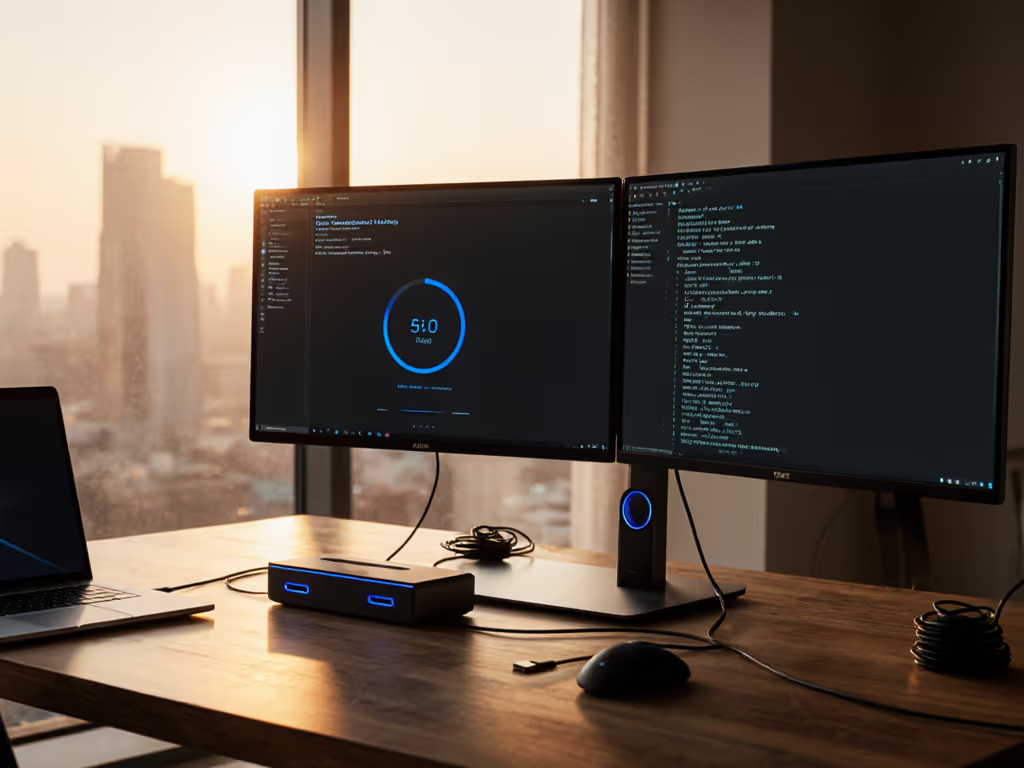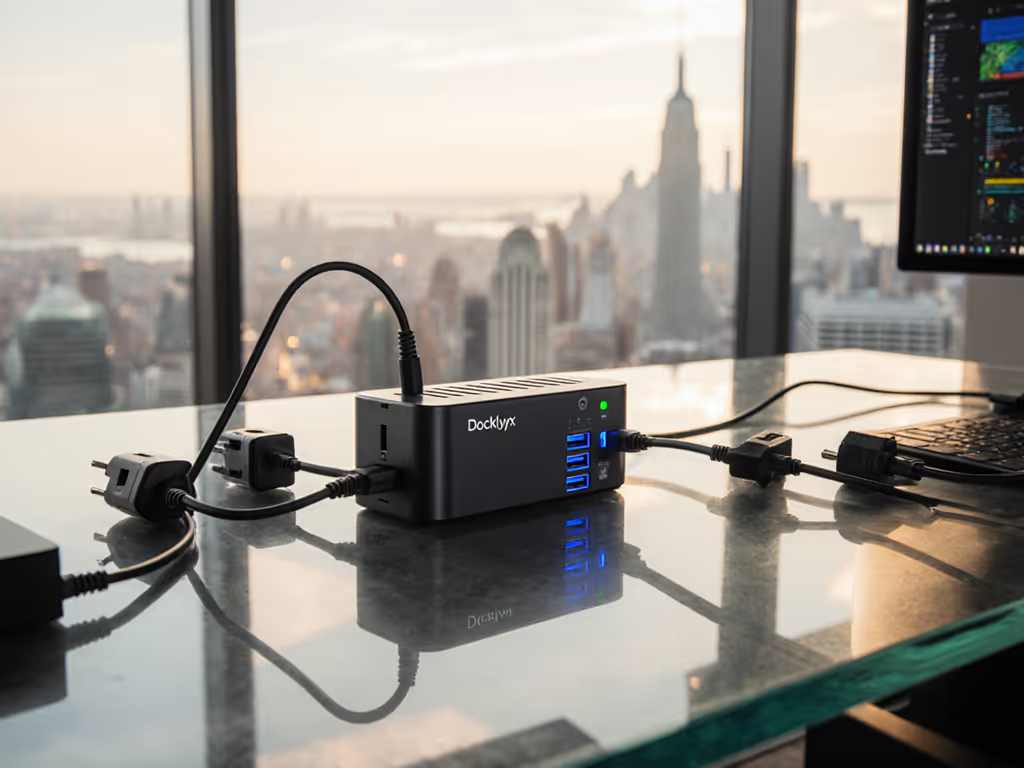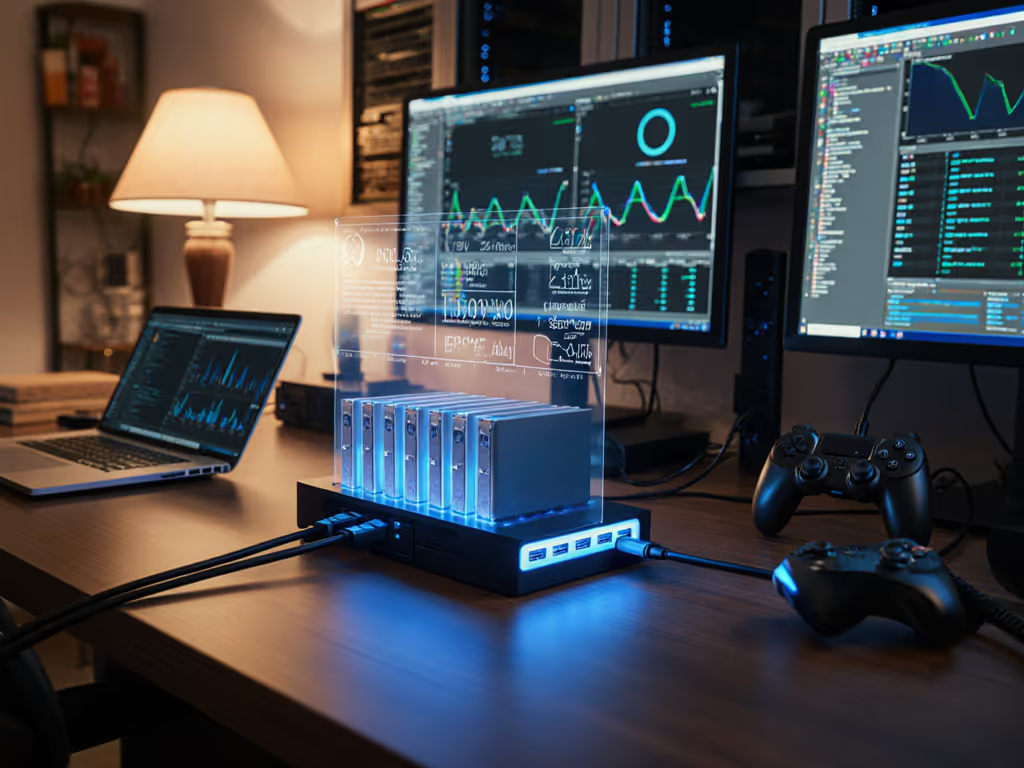
Universal Docking Station Desktop: Essential Setup Guide
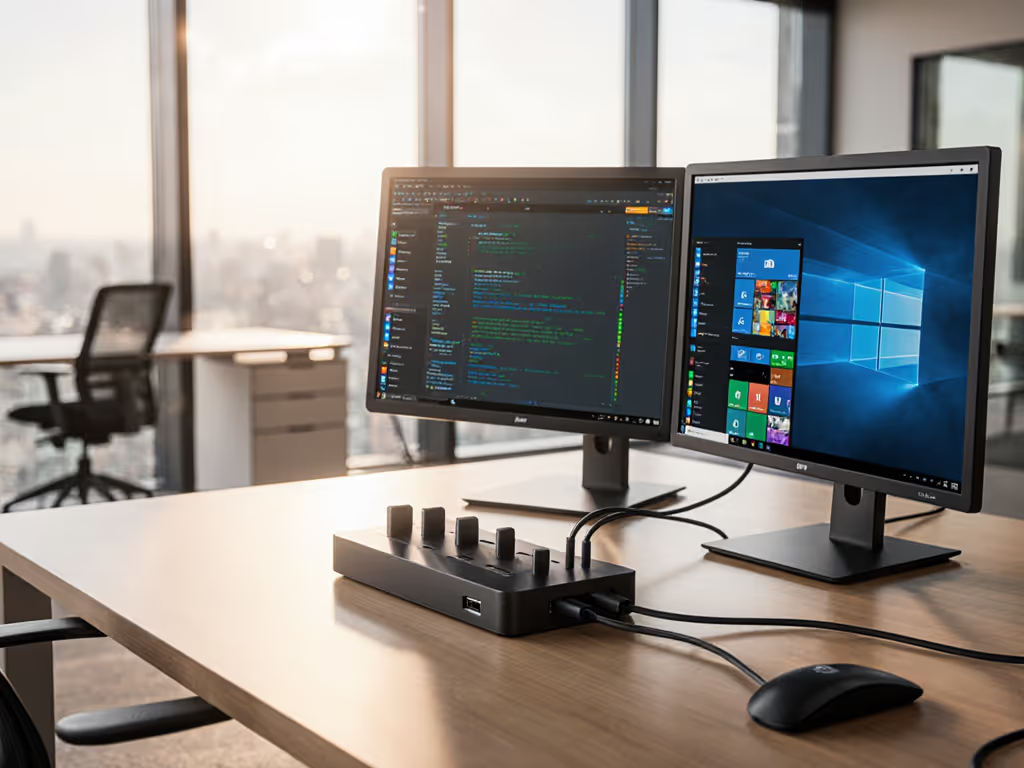
When your team lands at a hot-desking station, the universal docking station should feel like a natural extension of their workflow, not a puzzle. A well-executed docking station desktop setup eliminates the most common triggers of IT tickets: cable chaos, display mismatches, and phantom power issues. I've seen teams cut docking-related support calls by 70% simply by making the right connection the obvious one. Small setup details prevent the big support calls. Here's how to build a truly universal docking station desktop that just works, every time.
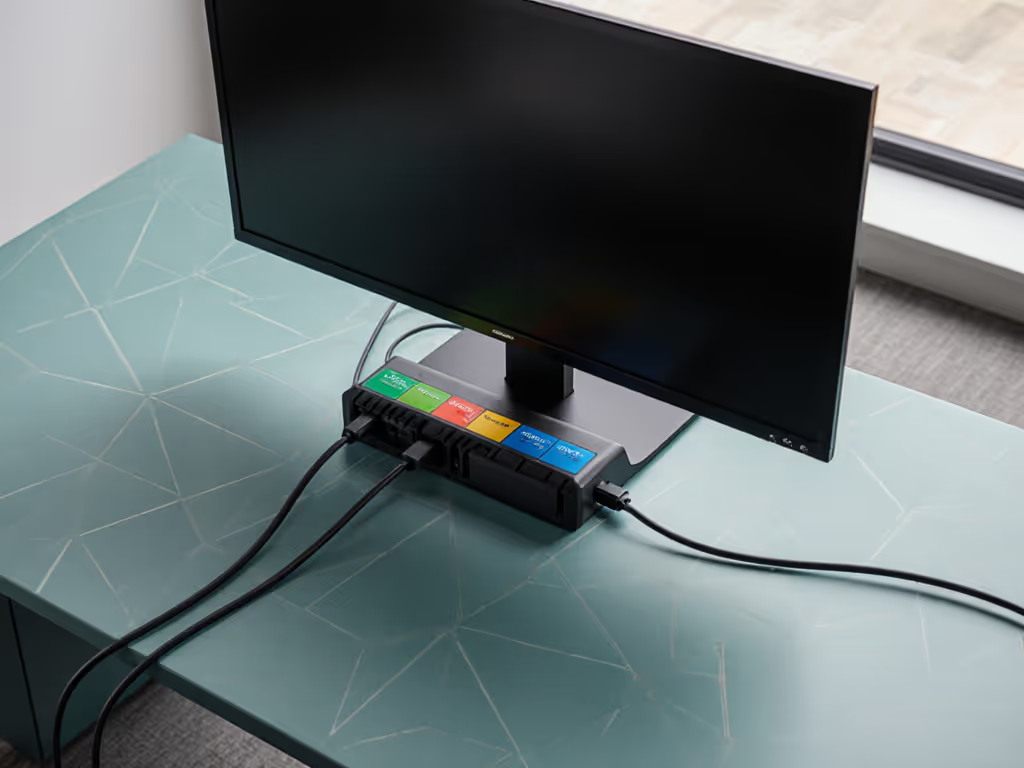
Why "Universal" Isn't Automatic (And How to Fix It)
Marketing claims about "universal compatibility" often crumble in mixed-fleet environments. One laptop might deliver dual 4K@60Hz, while another stutters at 30Hz, all using the same dock. The culprit? Unclear specs around USB-C Alt Mode, MST, or power delivery (PD) limits. Before rolling out desktop docking stations across your workspace:
- Test with your exact laptop models and OS versions (e.g., M1 Macs vs. Intel Windows).
- Verify sustained wattage, not peak (many docks advertise "100W charging" but throttle under dual-monitor load).
- Check Ethernet stability; flaky connections trigger more tickets than any other dock issue.
This isn't about chasing bleeding-edge specs. It's about delivering known-good outcomes: plug in > displays light up > network connects > work begins. Nothing less.
7 Checklist-Driven Steps for a Truly Universal Docking Station Desktop
1. Pre-Configure Displays Before Dock Deployment
Stop assuming monitors will "just work." Test every monitor-laptop-dock combo in your environment:
- Fail point: HDMI 1.4 capping 4K at 30Hz (common in budget docks).
- Fix: Mandate DisplayPort 1.4 or certified USB4 cables for dual 4K@60Hz. Label ports per tested outcome (e.g., "DP 4K@60Hz ONLY").
- Pro tip: Disable Consumer Electronics Control (CEC) on monitors (solves 80% of wake-from-sleep black screens).
Make the default the easy path. When users see exactly which port drives their specific monitor, hesitation vanishes.
2. Standardize the Physical Layout (VESA-Mounted Is Non-Negotiable)
Hot-desking fails when docks sit loose on desks. Instead:
- Mount docks VESA-style behind the monitor (using clamps compatible with common monitor arms).
- Route power/Ethernet vertically down the monitor stand, not across the desk.
- Eliminate cable clutter by specifying exact lengths: 30cm for USB-C laptop cable, 1m for Ethernet.
This creates a clean desk surface where the only visible cable is the single USB-C tether to the laptop. Users instantly know where to plug in (no hunting).
3. Prioritize Single-Cable Simplicity (No Exceptions)
Demand docks that consolidate power, data, and video into one USB-C or Thunderbolt cable. If your laptop needs two cables (e.g., separate power), you've already lost:
- Verify: Does the dock deliver sustained PD matching your power-hungry laptops? (Test under CPU/GPU load!)
- Avoid: "Universal" docks that require dongles for Ethernet or extra power. This isn't universal, it's friction.
- Golden rule: If a laptop model can't get 100% functionality over one cable, exclude it from your standard. Better limited compatibility than universal confusion.
4. Label Ports Like an Air Traffic Controller
Unlabeled ports are the enemy of speed. Apply this system:
- Color-code by function: Red (power), Blue (Ethernet), Yellow (audio), Green (keyboard/mouse).
- Add icons: DisplayPort = "❈❈" (dual-monitor), HDMI = "❈" (single)
- Mark forbidden ports: "DO NOT USE (FOR IT ONLY)" on spare USB-C ports.
In our rollout, this reduced "wrong port" tickets by 90%. When blue = network, plug-and-play becomes muscle memory.
5. Create the One-Page "Plug Here" Card
Your documentation must be faster than Googling. On a single laminated card:
- Show ONLY essential ports (laptop, monitor, power, Ethernet) (hide unused ones).
- Use plain-language icons, not port names (e.g., "Laptop Cable" > "USB-C").
- Include OS-specific tips: "On Mac: Check 'Prefer External Display' in System Settings."
Place it under the monitor bezel so it's visible only when needed. This card made first-time setup time drop from 8 minutes to 90 seconds in our APAC office.
6. Bake in Hot-Desk Readiness (Ethernet Always On)
Leave Ethernet permanently connected to the dock at the desk. Why?
- Corporate Wi-Fi often throttles bandwidth or blocks ports.
- Wired = consistent IP/MAC for network policies.
- Prevents "Why is my network slow?" tickets.
Also: Remove all spare adapters (HDMI-to-DisplayPort etc.). If it's not in your standard kit, it causes confusion. One less cable to lose = one less ticket.
7. Automate Updates (Without Disrupting Flow)
Dock firmware updates shouldn't require manual intervention. To avoid the "update black hole":
- Require docks with silent background updates (e.g., IT admin pushes via SCCM/Intune).
- Baseline drivers per OS: Note which Windows build breaks DisplayLink? Block it until patched.
- Audit quarterly: Run a script to flag docks >6 months without firmware updates.
This stops "Why did my dock stop working after Windows Update?" (a top 5 ticket source).
The Invisible Dock: Where Your Success Lives
A great dock isn't celebrated for its specs. It's celebrated because no one notices it. When your analysts plug in, their dual 4K screens wake instantly, Ethernet connects silently, and their laptop charges steadily, all with zero questions. That's the power of the universal docking station desktop done right.
Hot-desking was chaos until we erased ambiguity. VESA mounts, right-length cables, color-coded ports, and a "Plug Here" card made the complex feel obvious. Make the default the easy path, and watch ticket volume plummet. Your team won't say "great dock." They'll say, "I just got to work."
Related Articles

